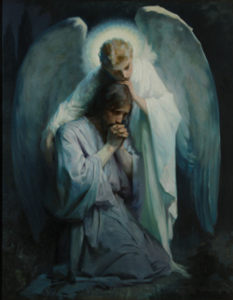
Agony in the Garden, Frans Schwartz (1898)
Holy Week, and the Triduum in particular (Holy Thursday, Good Friday, Holy Saturday and Easter Sunday), is arguably the most intense and meaningful week of the liturgical year. Each day holds a unique importance in the formation of Catholic theology, and it seems that within each Triduum, each of these days holds a special grace. Holy Thursday draws us more deeply into the mystery of the Eucharist, Good Friday draws us to the Cross, Holy Saturday draws us to the silence of Our Lady, and Resurrection draws us into an entirely new dimension of divine life, beyond the throes of death.
In our Benedictine monastery, we have a beautiful tradition of keeping watch on Holy Thursday night before the tabernacle, adorned with flowers and candles. It is a special time of solemnity and silence, as the agony of Our Lord in the garden is relived. Each year provides this sacred opportunity to enter into the suffering of Jesus, his mental and emotional anguish, and thereby his ineffable love.
Bl. John Henry Newman has an incredibly powerful meditation on this moment of Jesus’ life, as he enters into his hour of sacrifice. He writes: “There, then, in that most awful hour, knelt the Savior of the world, putting off the defenses of His divinity, dismissing His reluctant Angels, who in myriads were ready at his call, and opening His arms, baring His breast, sinless as He was, to the assault of the foe… His very memory is laden with every sin which has been committed since the fall…” (Discourses to Mixed Congregations, 16). Newman, as do so many of the writings of the saints, helps us to enter into the Garden with Christ, gives us courage to walk to Calvary with Christ, and sets us on the path toward the Resurrection—with Christ.

Leave a Reply